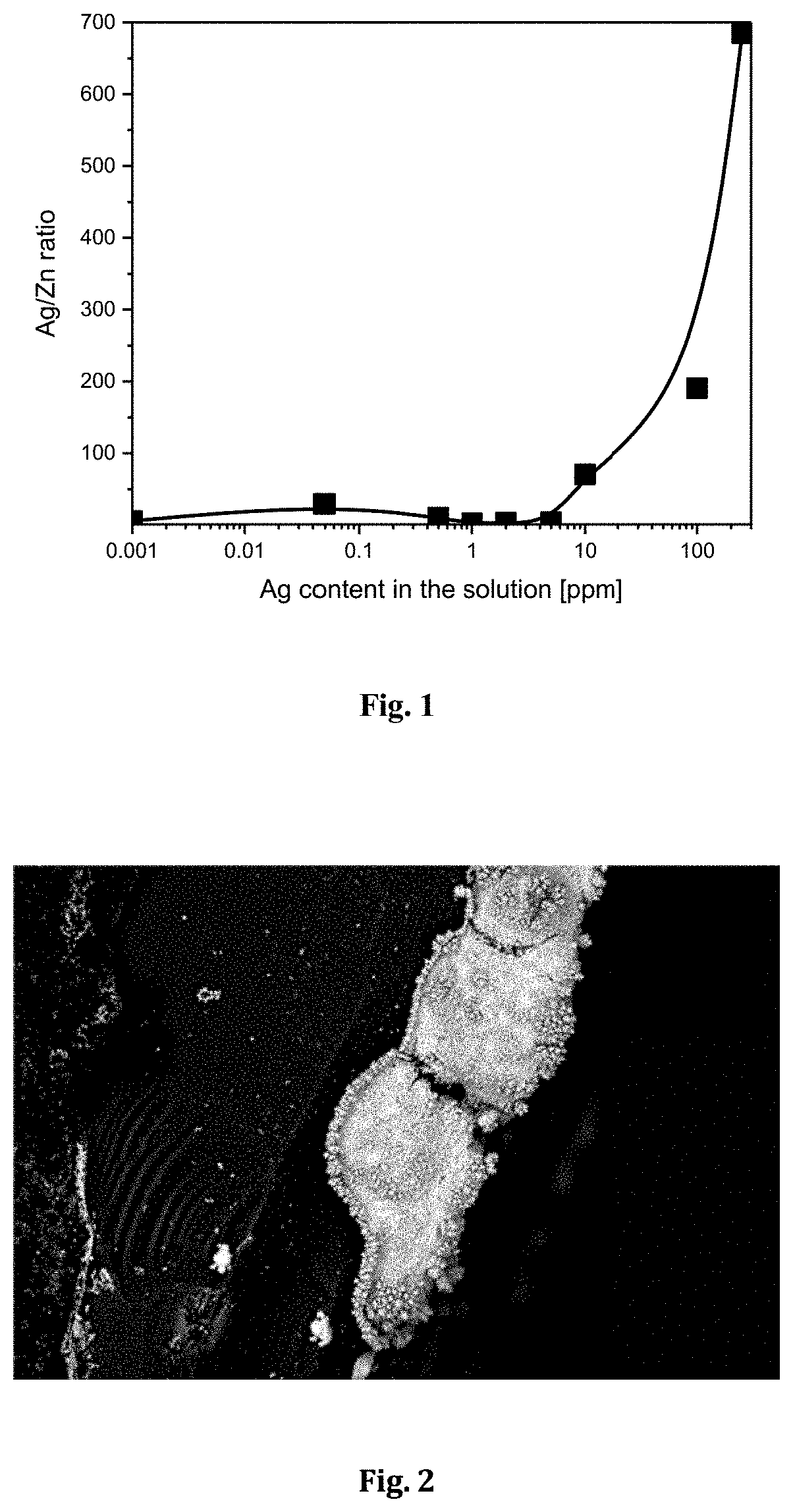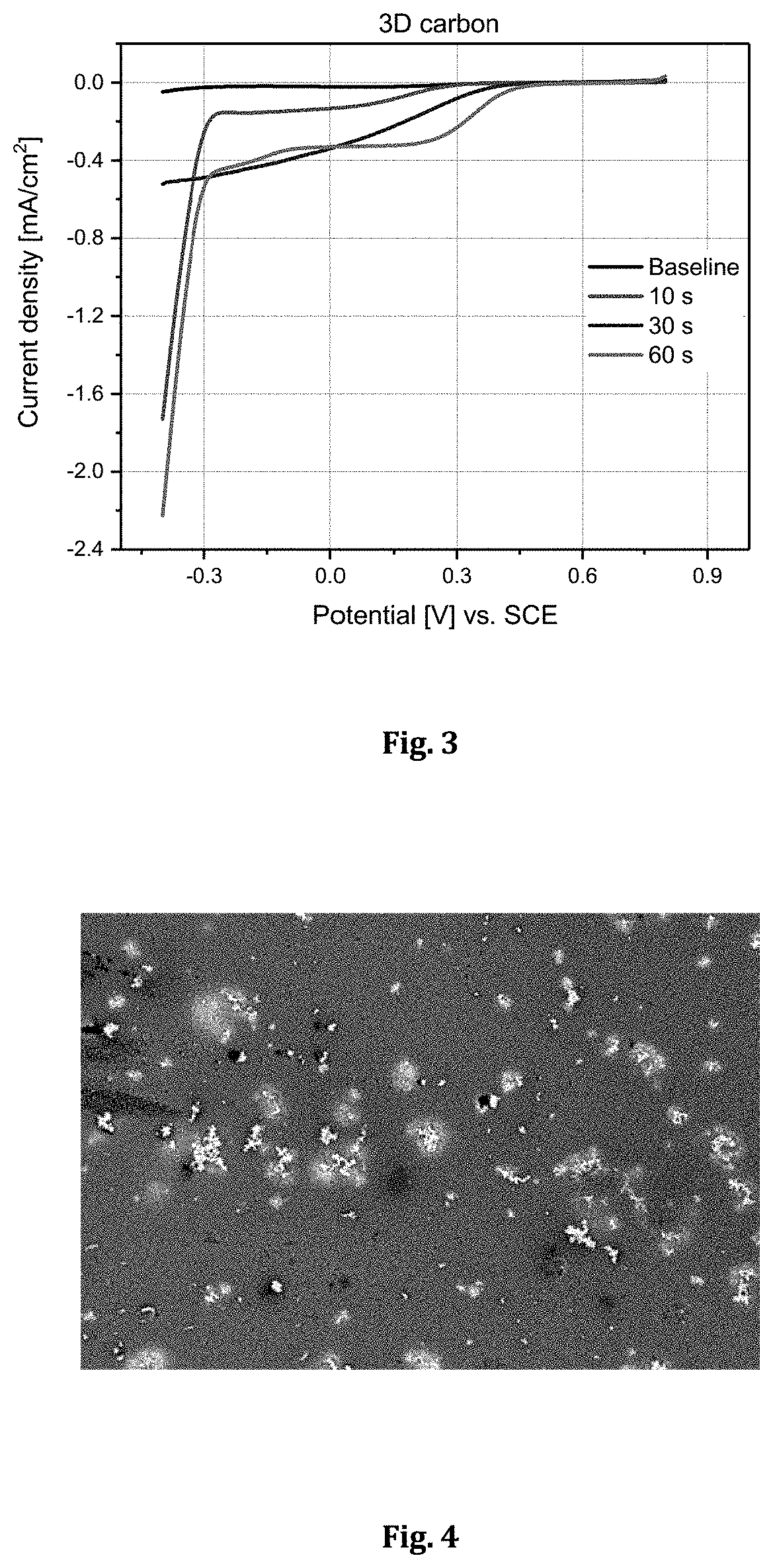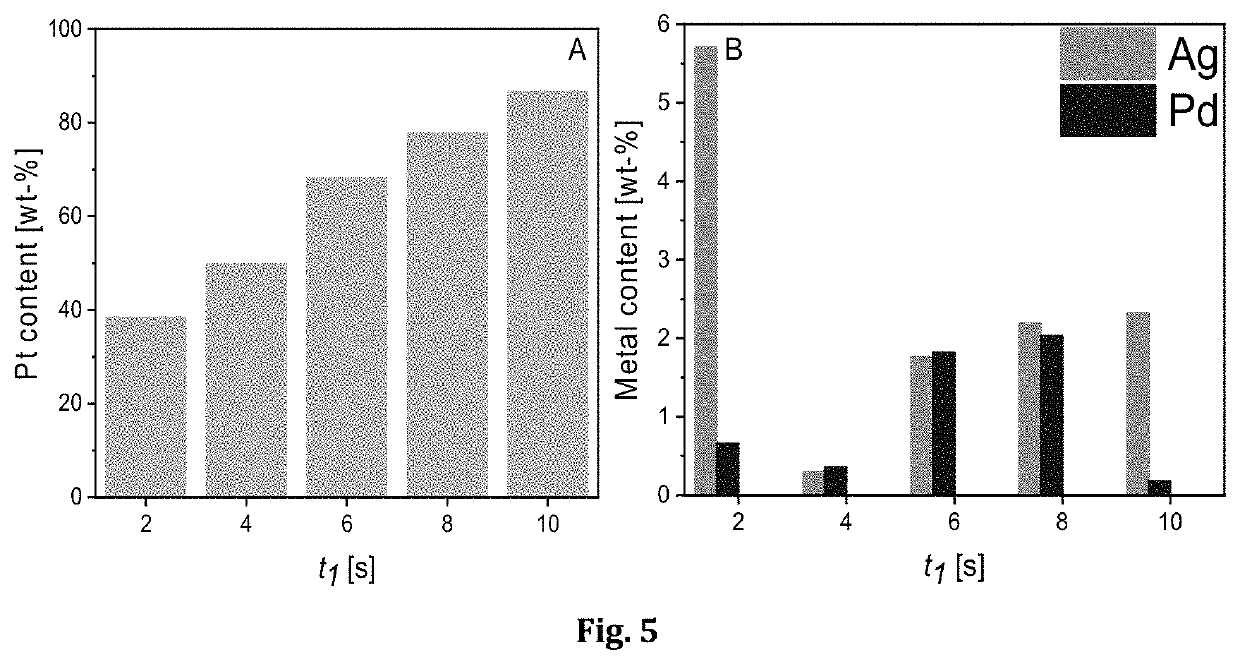A method of recovering Pt or Ag or Pt and Ag from sulfate based metal solutions
a technology of sulfate and metal solutions, applied in the field of recovering pt or ag or pt and ag from sulfate solutions, can solve the problems of minor amount of pt and/or ag in the sulfate solution, and the removal of these is not considered economically attractive, so as to improve the circular economy of metals
- Summary
- Abstract
- Description
- Claims
- Application Information
AI Technical Summary
Benefits of technology
Problems solved by technology
Method used
Image
Examples
example 1
of Ag from Solutions with Minor Concentrations of Ag
[0067]In this example platinum electrode was subjected to ED-RR in solution containing 60 g / L Zn, and 10 g / L H2SO4. The silver content in the solution varied between 1 ppb-250 ppm. The electrodeposition potential in step 1 was −0.7 V (vs. SCE) and the cut-off potential for the redox replacement (in step 2) was +0.3 V (vs. SCE). The used deposition time in step 1 was 10 s. The step 1 and step 2 were cycled 10 times. FIG. 1 shows that Ag can be recovered on Pt electrode with this method. The resulting deposit has over five times more Ag than Zn (in solution with 1 ppb Ag, 60 g / L Zn). The ratio between deposited Ag and Zn increases exponentially as a function of Ag content in the original solution, as seen in Table 1. This result shows that this method can be used for recovery of silver from solutions containing very low amounts of silver.
TABLE 1Effect of the Ag content in the solution on the content of the deposit.Ag content in the s...
example 2
of Pt on 3D Carbon
[0068]In this example 3D carbon electrode was subjected to ED-RR in solution containing 60 g / L Ni, 20 ppm Pt, and 10 g / L H2SO4. The electrodeposition potential in step 1 was −0.6 V (vs. SCE) and the cut-off potential for the redox replacement (in step 2) was +0.4 V (vs. SCE). The used deposition time in step 1 was 10 s. The step 1 and step 2 were cycled 10 times.
[0069]FIG. 2 shows SEM micrograph of the deposited Pt / Ni on the surface of 3D carbon. The Pt / Ni ratio was determined by SEM-EDX and it was approx. 12 in average. The highest analyzed deposit fraction of Pt was 98 wt-% whereas the highest analyzed Ni was maximum 14.5 wt-%. This shows that using this method Pt can be recovered effectively on 3D-carbon electrode.
Example 3. Catalysing Effect of the Pt / Ni Deposits for H2 Evolution
[0070]In this example 3D carbon electrode was subjected to ED-RR in solution containing 60 g / L Ni, 20 ppm Pt and 10 g / L H2SO4. The electrodeposition potential in step 1 was −0.6 V (vs. ...
example 4
Ni on 3D Carbon
[0073]In this example 3D carbon electrode was subjected to ED-RR in solution containing 60 g / L Ni, 20 ppm Pt, 10 ppm Ag and 10 g / L H2SO4. The electrodeposition potential in step 1 was −0.6 V (vs. SCE) and the cut-off potential for the redox replacement (in step 2) was +0.4 V (vs. SCE). The used deposition time in step 1 was 10 s. The step 1 and step 2 were cycled 20 times. FIG. 4 shows SEM micrograph of the deposit on 3D carbon. Table 2 shows that Ag and Pt can be recovered on 3D carbon electrode with this method.
TABLE 2Content of the deposit on 3 D carbon.C (wt-%)Ni (wt-%)Ag (wt-%)Pt (wt-%)75.080.880.9623.08
PUM
| Property | Measurement | Unit |
|---|---|---|
| concentration | aaaaa | aaaaa |
| concentration | aaaaa | aaaaa |
| concentration | aaaaa | aaaaa |
Abstract
Description
Claims
Application Information
 Login to View More
Login to View More - R&D
- Intellectual Property
- Life Sciences
- Materials
- Tech Scout
- Unparalleled Data Quality
- Higher Quality Content
- 60% Fewer Hallucinations
Browse by: Latest US Patents, China's latest patents, Technical Efficacy Thesaurus, Application Domain, Technology Topic, Popular Technical Reports.
© 2025 PatSnap. All rights reserved.Legal|Privacy policy|Modern Slavery Act Transparency Statement|Sitemap|About US| Contact US: help@patsnap.com



